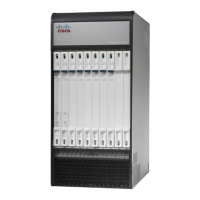DescriptionKeyword/Variable
Specifies that the security administrator cannot access the system's command line
interface (CLI).
Note: Use this keyword in conjunction with the ftp keyword to allow access to
the system with FTP only.
no-cli
Specifies the maximum amount of time that the operator can maintain a session
with the system.
absolute_time is measured in seconds. Use any integer from 0 through 300000000.
The default is 0. When the absolute timeout value is reached, the operator session
is automatically terminated.
timeout-absolute absolute_time
Specifies the maximum amount of time that an operator session can remain idle
before being automatically terminated. The idle_time is measured in seconds. Use
any integer from 0 through 300000000. The default is 0.
timeout-idle idle_time
For example:
[local]asr5500(config-ctx)# administrator Secure1 301delta timeout-idle 120
For additional information on configuring system administrators, refer to the System Administration Guide.
Important
Step 4
Enter exit at the prompt to exit the context configuration mode.
[local]asr5500(config-ctx)# exit
[local]asr5500(config)#
Step 5
Optional: Enter system hostname hostname to configure a hostname by which the system will be recognized on the
network. host_name is the name by which the system will be recognized on the network. The hostname can be up to 63
alphanumeric characters and is case sensitive.
The new hostname replaces the default hostname "asr5500" that appears in the CLI prompt. It also becomes
the system hostname parameter for SNMP.
Important
For example:
[local]asr5500(config)# system hostname node1033
[local]node1033(config)#
MIO/UMIO Port Numbering
The two 1 GbE ports on the MIO/UMIO cards in slots 5 and 6 can only be used as management ports. 10 GbE
ports can only be used for non-local contexts (service ports). MIO/UMIO port numbers are non-contiguous.
For lab environments where network booting of the chassis is desirable, Ethernet 1 port on an MIO/UMIO
can be used to network boot the chassis. Other MIO/UMIO ports cannot be used for network booting.
Important
The MIO/UMIO is equipped with two daughter cards (DCs). Each DC supports ten 10 GbE ports.
ASR 5500 Installation Guide
99
Initial System Configuration
MIO/UMIO Port Numbering

